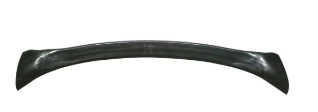What is a hydraulic molding
Introduce

Hydroforming is a metal forming process that uses hydraulic pressure to form metal sheets or tubes into complex three-dimensional parts. The process involves placing a flat or pre-bent metal sheet or tube into a mold, which is then filled with a pressurized fluid, usually water or oil. Fluid pressure causes the metal to deform and form the shape of the mold, resulting in a finished part with high precision and strength.
Two main methods of hydroforming can be used: tube hydroforming and plate hydroforming. Tube hydroforming involves placing a tube in a mold and filling it with a pressurized fluid to form the desired shape, while sheet hydroforming involves placing a metal sheet in a mold and applying pressure to deform it into the desired shape.
Advantage
Hydroforming offers several advantages over traditional metal forming methods such as stamping, forging or welding. These advantages include:
Complex shapes: Hydroforming can produce parts with complex and irregular shapes that are difficult or impossible to achieve with traditional metal forming methods.
Reduced weight: Hydroforming can produce thinner-walled, lighter parts, improving fuel efficiency and reducing material costs.
High precision: The parts produced by hydroforming have high precision, high precision, small tolerance and small deformation.
Increased Strength: Due to the uniform deformation of the material, hydroforming can produce parts with increased strength and stiffness.
Less waste: Hydroforming produces less waste than traditional metal forming methods because it uses the entire sheet or tube and minimizes material waste.
Application
Hydroforming is used in a wide variety of industries including automotive, aerospace, defense and medical. Some examples of hydroformed parts include:
Automotive components: Hydroforming is used to produce a variety of automotive components such as exhaust systems, frame rails, suspension components, and engine mounts.
Aerospace components: Hydroforming is used to produce lightweight, high-strength aerospace components such as fuselage frames, wing skins, and structural parts.
Medical Devices: Hydroforming is used to produce medical devices such as surgical instruments and implants because of its ability to produce complex and precise shapes.
Building components: Hydroforming is used to produce building components such as curved metal panels and decorative features for buildings and structures.
Product
Materials cover from mild steel to ultra-high strength steel, including cold rolled and hot rolled products:
QStE340TM、QStE440TM
SAPH370、SAPH440、BR440/590HE
BR1500HS
HC250/450DP、HC300/500DP、HC340/590DP
HC420/780DPD+Z、HC550/980DPD+Z
DC01、DC03、DC04、DC05、DC06

Part: APillar
Material:DP980 1.8mm

Part:Torsion Beam
Material:BR1500HS 3.5mm

